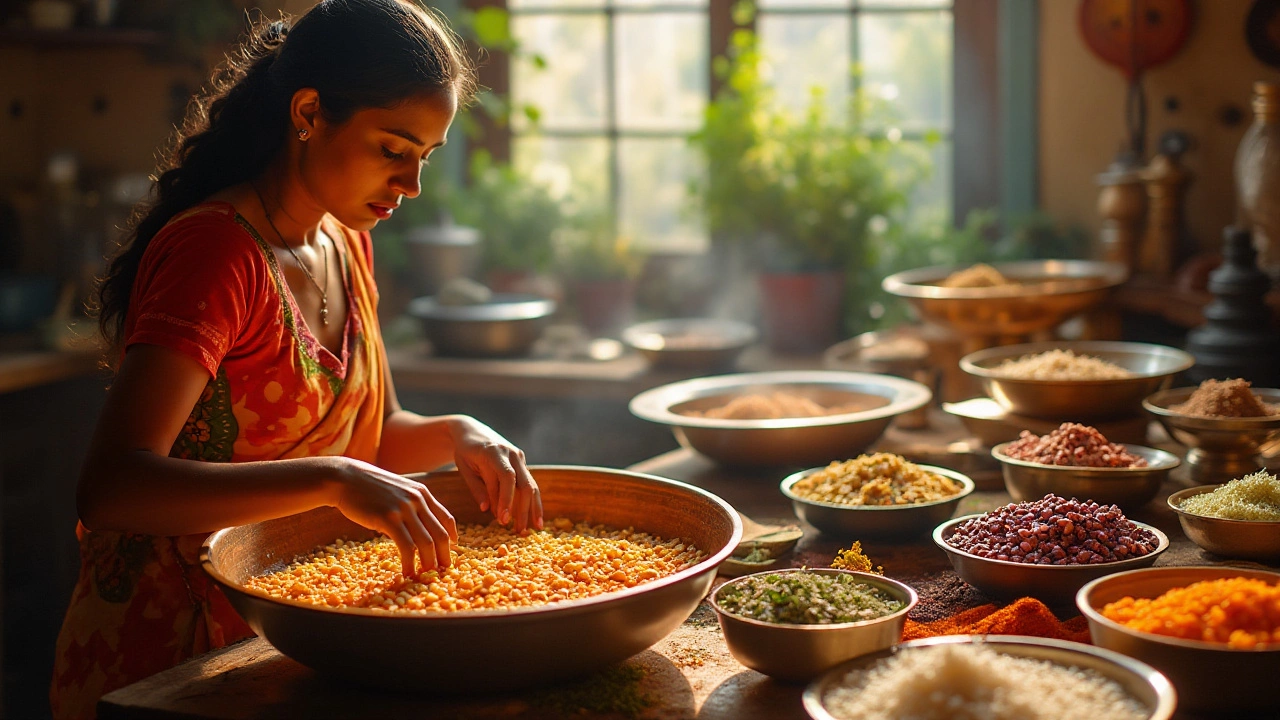Soaking in Indian Cooking
When working with Soaking, the act of immersing ingredients in water before cooking. Also known as pre‑soaking, it softens, cuts cooking time, and boosts digestibility. Proper soaking makes a huge difference in texture and flavor, especially for Indian staples that rely on even heat distribution.
Why Soaking Matters in Indian Cooking
Inside the Indian pantry, three foods almost always get a soak: dal, lentils, and rice. Soaking dal reduces the gritty feel and releases stubborn antinutrients like phytic acid, making nutrients more bioavailable. Lentils benefit from a shorter boil, which preserves their shape and prevents them from turning mushy. Even plain basmati or sona masuri rice gains a fluffier bite when the grains absorb water before the heat hits. The process also helps spices adhere better, so the final dish carries a uniform aroma.
Beyond those staples, beans, chickpeas, and even tough beans for curries get a boost from soaking. The water acts as a medium that starts breaking down complex sugars, which cuts down on the dreaded gas‑producing effect after a meal. Think of soaking as the first step in a chain: softer ingredients → faster cooking → better flavor absorption → easier digestion.
How long should you soak each item? A quick rule of thumb works well: split‑grade dal (like toor or moong) needs 30‑45 minutes, while larger lentils (such as urad or chana) profit from 1‑2 hours. Whole grains of rice do best with at least 20 minutes; for biryani‑style rice, 30 minutes ensures the grains stay separate when you steam them. Warm water speeds up the process, but a cool soak helps preserve color in red lentils. Rinse the soaked beans thoroughly before cooking to wash away loosened starches and any residual bitterness.
Skipping soaking isn’t fatal, but it carries a cost. Unsoaked dal takes longer to soften, which means more fuel and a higher chance of over‑cooking the outer layers while the center stays hard. Nutritionally, you miss out on reduced antinutrient levels, which can hinder iron and zinc absorption. In high‑altitude kitchens, the extra cooking time can be even more noticeable because water boils at lower temperatures. So, if you’re in a hurry, a pressure cooker can compensate, but it won’t erase the texture differences that soaking creates.
Now that you know the why and how of soaking, the articles below will walk you through specific scenarios: the health impact of not soaking dal, tricks to speed up dosa batter fermentation, and even the role of lemon in biryani’s rice texture. Dive in to see practical tips, science‑backed explanations, and quick fixes that fit any Indian kitchen.

The Impact of Skipping Soaking on Pulses and Dal Recipes
Skipping the soaking step when preparing pulses might seem like a time-saver, but it can have significant effects on texture, nutrition, and cook time. Soaking helps soften pulses, making them easier to cook and digest, while also reducing anti-nutrients like phytic acid. Without soaking, pulses might not cook evenly and could retain anti-nutrients that hinder absorption of essential minerals. Learn how to make the best choice for your dal recipes and ensure maximum flavor and nutrition.